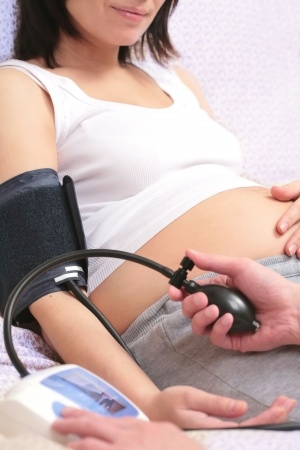What is Preeclampsia?
 Preeclampsia occurs after week 20 when a pregnant woman develops high blood pressure and excess protein in the urine.
Preeclampsia occurs after week 20 when a pregnant woman develops high blood pressure and excess protein in the urine.
Symptoms for preeclampsia
Blood pressure is the main symptom of preeclampsia. It is categorized by two or more readings over 140/90 between six hours and seven days apart.
The following can also be symptoms of preeclampsia:
- Edema: Swelling of the hands and feet
- Right side pain: Typically in the abdomen below the ribs, but may also present as right shoulder pain
- Changes in vision: Blurry vision, sensitivity to light, sparkles or temporary vision loss may be indicative of preeclampsia
- Headaches
Risk Factors of preeclampsia
While the cause is still unknown, the below may increase one’s risk of developing preeclampsia:
- Maternal age of under 20 or over 35
- New paternal partner
- History of preeclampsia or chronic hypertension
- Obesity
- Multiples pregnancy
- Extended intervals between pregnancies
Treating preeclampsia
If left untreated, preeclampsia may put the mother and/or fetus at risk. Treatment options include:
- Medications: Often administered to lower blood pressure, prevent seizures and corticosteroids may also be recommended to help expedite the baby’s lungs to mature in preparation for survival outside of the womb in the event of premature birth.
- Bed rest or hospitalization: If preeclampsia occurs too earlier in the pregnancy, bed rest may be recommended to increase blood flow to the placenta. For severe cases, hospitalization may be required to monitor the mother and baby.
- Delivery: The only way to cure preeclampsia is to deliver the baby. In severe cases, especially later in the pregnancy, labor may be induced. If the mother is not able to withstand labor, a cesarean birth will be performed.

